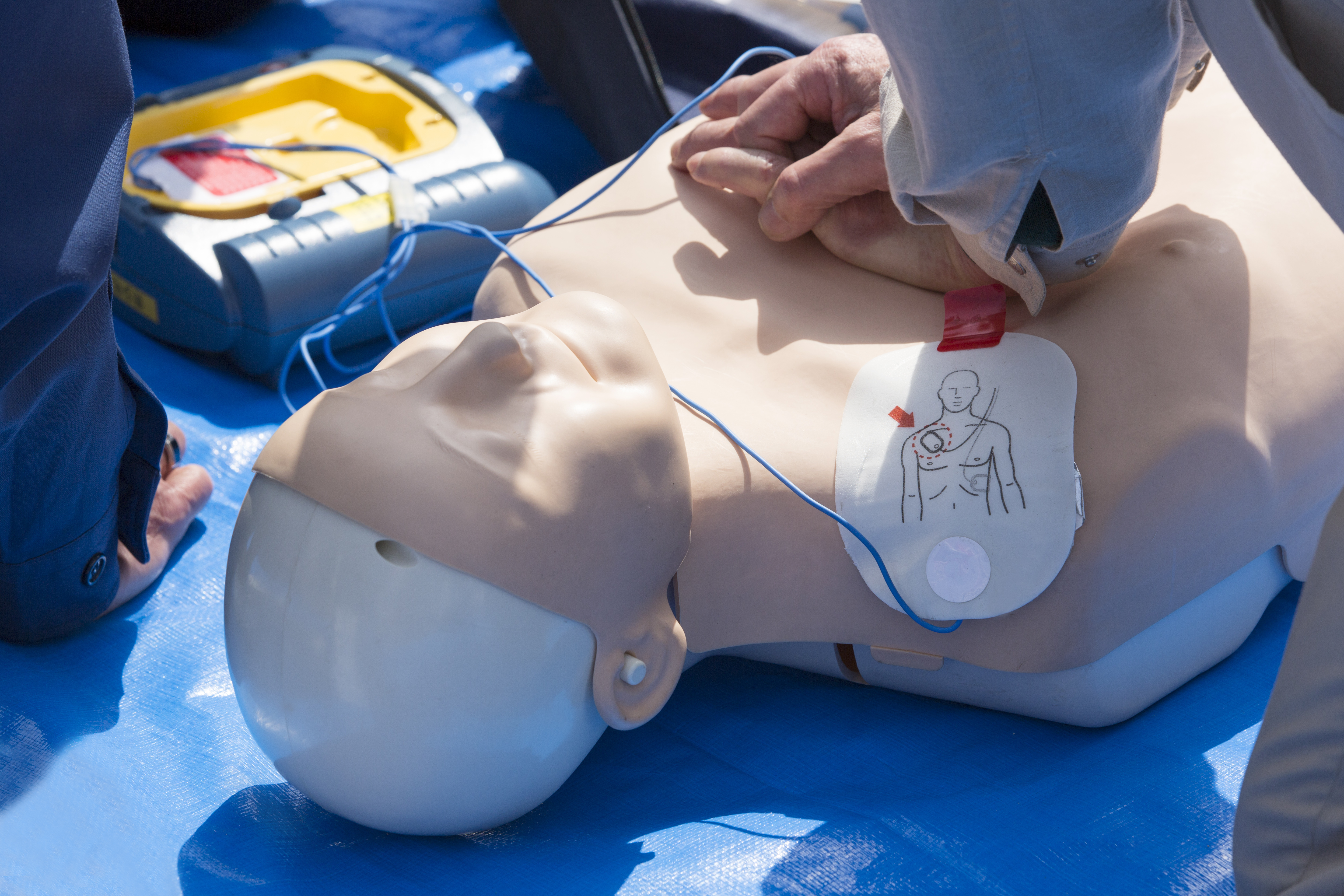
01 Jun When to use hands-only CPR and AEDs
According to the American Heart Association, “70 percent of Americans feel helpless to act during a cardiac emergency because they don’t know CPR or are afraid of hurting the victim.”
This statistic gets to the heart of the mission of Local Individuals for Emergencies, or LIFE, a community-led advisory group which aims to help Harney County residents feel more prepared to help someone in an emergency using CPR (Cardiopulmonary Resuscitation) and AEDs (Automatic External Defibrillators.)
Hands-only CPR
When you see a teen or adult collapse, you can perform hands-only CPR.
Adults who suddenly collapse and are not responsive are likely experiencing sudden cardiac arrest. Their chance of survival is nearly zero unless someone takes action immediately. According to the American Heart Association, about 90 percent of people who suffer out-of-hospital cardiac arrests die. Hands-only CPR is an easy, effective way for any bystander, especially if they act immediately, to double or triple a cardiac arrest victim’s chance of survival. You should call 9-1-1 and start pushing hard and fast in the center of the chest with minimal interruptions. If an adult has collapsed for reasons other than cardiac arrest, hands-only CPR could still help by causing the person to respond (begin to move, breathe normally or speak). If that occurs, hands-only CPR can be stopped. Otherwise, chest compressions should continue until emergency responders arrive.
When to use an AED
When an AED arrives, you should attach it and follow the audible instructions.
Using an AED on a person who is having sudden cardiac arrest (SCA) may save the person’s life. The most common cause of SCA is an arrhythmia called ventricular fibrillation (v-fib). In v-fib, the ventricles (the heart’s lower chambers) don’t beat normally. Instead, they quiver very rapidly and irregularly. Another arrhythmia that can lead to SCA is ventricular tachycardia. This is a fast, regular beating of the ventricles that may last for a few seconds or much longer. In people who have either of these arrhythmias, an electric shock from an AED can restore the heart’s normal rhythm (if done within minutes of the onset of SCA).
The AED will shock the patient if indicated, or tell you to start CPR (hands-only CPR). In two minutes, the AED will tell you to stop CPR and it will check to see if the patient needs to be shocked again. Then it will tell you to start CPR. This 2-minute cycle will continue until the patient’s heart starts, or EMS arrives.
LIFE Committee

Join the LIFE Committee!
LIFE Committee members advocate for more first aid and CPR education, the placement of more AEDs around the community, and aid in the maintenance of and training on these AEDs.
What can Harney County residents do to support the cause of cardiac emergency preparedness?
1) Take a CPR class or encourage others to do the same – classes are regularly offered for free at Harney District Hospital;
2) Tell LIFE if your business has an AED, and ask for assistance with it;
3) Use the PulsePoint AED Locator app;
4) Join the LIFE Committee!
For more information, find LIFE online at www.harneydh.com/ways-to-give/life-committee, and on Facebook @LocalIndividualsForEmergencies.
Credit: American Heart Association, National Institutes of Health.


No Comments